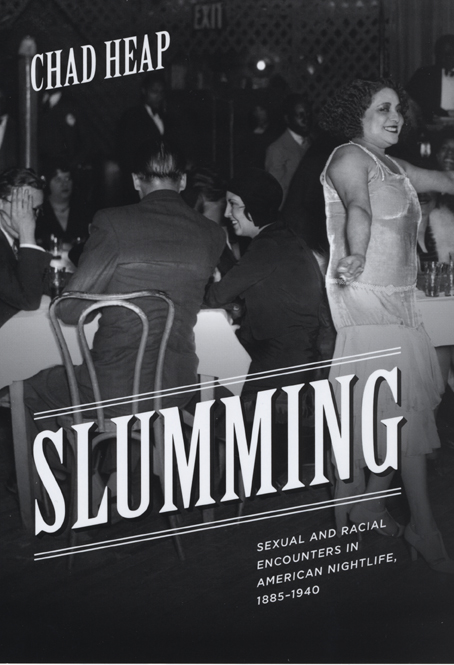Slumming and the unmatchable thrill of doing something disreputable

The New York Times City Room blog ran an article yesterday on a 19th century pastime that began as a morally transgressive practice of the urban upper class, but also played an important role in dramatically recasting the racial and sexual landscape of cities like New York and Chicago. “Slumming”, as the practice was popularly known, invited “well-off white urban [dwellers] to explore black, Chinese, gay, or poor working-class communities” in search of a good time, and the unmatchable thrill of doing something disreputable. In the late 1800’s upper class whites, sometimes accompanied by a local guide, would push their way into the living spaces residents in impoverished neighborhoods in a voyeuristic attempt to “see how the other half lived,” reveling in the excitement of police raids, opium dens, and “gawking at prostitutes, gays, lesbians and cross-dressers.” The City Room posting cites Chad Heap, author of Slumming: Sexual and Racial Encounters in American Nightlife, 1885-1940 as he explains how, in the course of the following decades, the practice of slumming evolved into a vital avenue for communication and appreciation across social, economic and cultural barriers that typified Jazz-Age America. From the City Room blog:
“In the late 19th century, American cities, especially New York, began to become more sizable and cities became more spatially socially divided, especially along race and class lines,” Professor Heap said.
He pointed to the post-Civil War building boom of the Gilded Age, which allowed the upper middle class to escape from the morass of poverty downtown. Slumming brought them back: “As problematic as slumming can be as a voyeuristic sport, it’s positive in the context of its period.” It allowed white Americans to choose to socialize and intermingle with more marginal groups in their cabarets, bars, speakeasies and nightclubs.
The article continues:
Slumming crossed not only ethic and class lines lines, but sexual lines as well. “That is, a spectatorship of sexualized groups,” Professor Heap said. He noted that people would go and gawk at prostitutes, gays, lesbians and cross-dressers. It allowed many in the upper middle class to explore sexual identities without the constraints of their own neighborhoods.
And indeed eclectic neighborhoods like Greenwich Village and Chicago’s Bronzeville might not be what they are today if not for the mingling between different social and economic groups facilitated by the early phenomenon of slumming.
The article also notes a resurgence in the practice today. For example, for twenty bucks you can still get a tour of some of Chicago’s disappearing projects (though one should note that the poverty is still alive and well in our fair city), and tours of Brazilian favelas seem to be gaining in popularity, as well as staged illegal border crossings in Mexico’s Parque EcoAlberto. But as Heap notes, most people today engage in the same type of voyeurism today simply by turning on the TV (or going to the movies for that matter).
Continue reading the rest of the article on the NYT City Room blog or read the introduction to Heap’s book to find out more about this fascinating phenomenon of 19th century urban American life whose effects are still felt powerfully today.
Update: The New Yorker also ran a short but positive blurb about Heap’s book recently. You can find it online in the Books Briefly Noted section of the magazine.